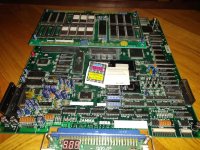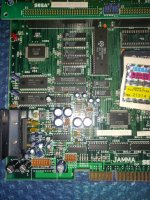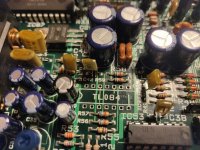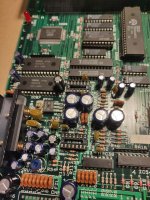Hello everyone,
Today I've received my Clutch Hitter Sega system 18 board (I'm preparing for the future multi ). I ran every test from the test menu and everything is working (RAM, ROM, VDP, IO, etc). My only issue is that when there is no BGM (when there is no sound or when there's only some audio effects) I hear a quite strong hiss noise. It seems like a shielding problem. On the board I didn't notice anything strange (except a green wire near the super capacitor but I don't think that could be related to that).
). I ran every test from the test menu and everything is working (RAM, ROM, VDP, IO, etc). My only issue is that when there is no BGM (when there is no sound or when there's only some audio effects) I hear a quite strong hiss noise. It seems like a shielding problem. On the board I didn't notice anything strange (except a green wire near the super capacitor but I don't think that could be related to that).
Anyone has some suggestion?
Thank you in advance
Today I've received my Clutch Hitter Sega system 18 board (I'm preparing for the future multi
 ). I ran every test from the test menu and everything is working (RAM, ROM, VDP, IO, etc). My only issue is that when there is no BGM (when there is no sound or when there's only some audio effects) I hear a quite strong hiss noise. It seems like a shielding problem. On the board I didn't notice anything strange (except a green wire near the super capacitor but I don't think that could be related to that).
). I ran every test from the test menu and everything is working (RAM, ROM, VDP, IO, etc). My only issue is that when there is no BGM (when there is no sound or when there's only some audio effects) I hear a quite strong hiss noise. It seems like a shielding problem. On the board I didn't notice anything strange (except a green wire near the super capacitor but I don't think that could be related to that).Anyone has some suggestion?
Thank you in advance

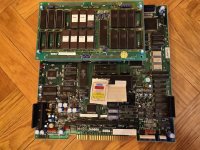
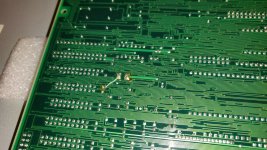
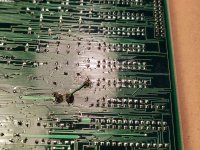
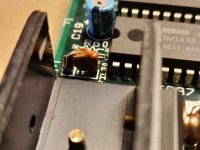
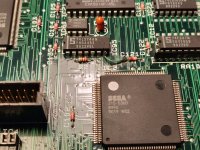

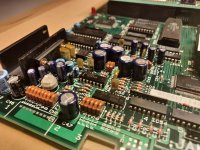
 ). Anyway I still hope that the issue can be caused from one of the capacitors that I still have to swap or from the volume potentiometer
). Anyway I still hope that the issue can be caused from one of the capacitors that I still have to swap or from the volume potentiometer 
